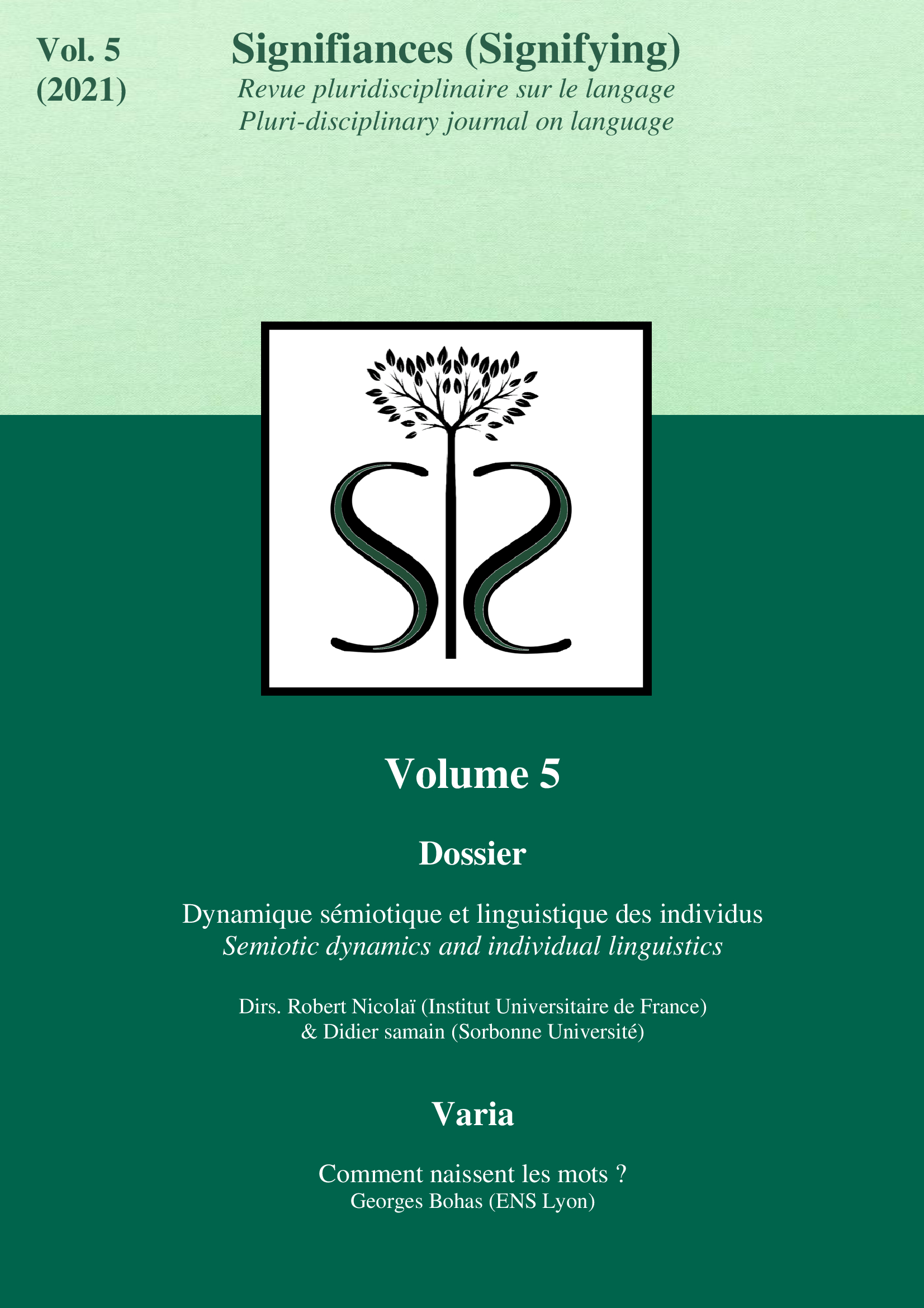Interactions socio-cognitives, mise en récit de l’historicité et conditions d’hétérogénéité ethnolinguistique : une étude de cas (mazatec, Mexique sud-oriental)
DOI :
https://doi.org/10.52497/signifiances.v5i1.310Résumé
Le mazatec, langue oto-mangue du Mexique sud-oriental, à forte diversité dialectale permet d’illustrer les dynamiques d’interactions socio-cognitives, la mise en récit de l’historicité et les conditions d’hétérogénéité ethnolinguistique, à titre d’étude de cas. Le modèle d’analyse retenu est celui de la construction sémiotique de Robert Nicolaï, qui recherche les conditions d’émergence du sens dans les données et les construits sociolinguistiques. Dans un premier temps, nous déployons les résultats d’une enquête d’intercompréhension réalisée dans 23 localités par Paul Livingston Kirk, qui a décrit par ailleurs la phonologie comparée des dialectes mazatecs. Cette base de connaissance permet d’explorer un aspect du feuilletage de la compétence des locuteurs, en tant que dimension virtuelle du répertoire. Dans un deuxième temps, à partir de données discursives de terrain recueillies près de Huautla, nous analysons un fragment de mise en récit mythique mazatec riche en indices d’historicité, qui montre les procédés de construction du sens et l’art verbal mazatec, et la prégnance profonde de l’hétérogénéité langagière, y compris au sein de l’idiolecte d’un sujet « monolingue ».


